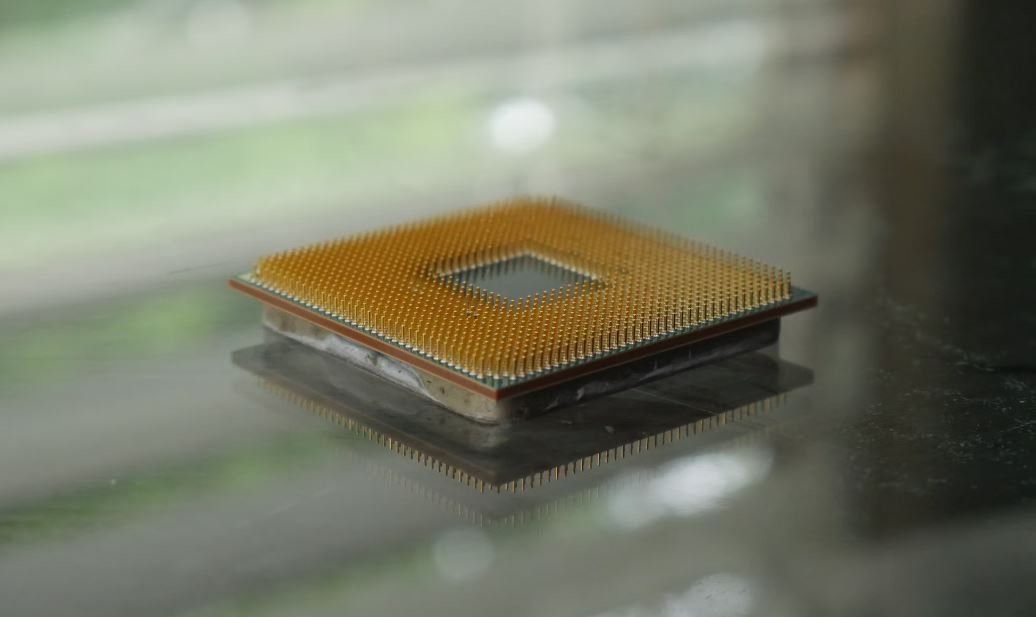Tesla Vs Polestar
Electric vehicles (EVs) have gained massive popularity recently as the world shifts towards sustainable transportation. Two major contenders in the EV market are Tesla and Polestar. Both companies are known for their innovative approaches and cutting-edge technology. This article aims to compare and contrast Tesla and Polestar, giving you a comprehensive overview of each brand’s strengths and weaknesses.
Key Takeaways:
- Tesla and Polestar are leading electric vehicle manufacturers.
- Tesla has a larger market share and a vast Supercharger network.
- Polestar focuses on luxury design and performance.
- Both brands offer advanced autonomous driving features.
- Comparison based on factors like range, charging infrastructure, and price will assist buyers in making an informed choice.
Performance:
When it comes to performance, Tesla has been dominating the EV market with its insanely fast acceleration and impressive top speeds. The brand’s flagship Model S Plaid boasts an astonishing 0-60 mph time of under 2 seconds, making it the fastest production car in the world. On the other hand, Polestar focuses on creating a thrilling and captivating driving experience, combining the power of electric motors with meticulous attention to detail in terms of design and handling. *Polestar 2 offers impressive power delivery and responsive driving dynamics*.
Range and Charging:
Range anxiety is a common issue for EV owners, but Tesla’s extensive Supercharger network sets it apart. With over 25,000 Superchargers globally, Tesla owners have access to a widespread and reliable charging infrastructure. Additionally, Tesla vehicles like the Model S Long Range have a remarkable EPA estimated range of over 400 miles. On the other hand, Polestar 2 offers a respectable range of 275 miles which is more than sufficient for daily commuting. *Quick charging options allow both Tesla and Polestar owners to spend less time charging and more time enjoying the drive*.
Price and Models:
Tesla offers a range of models to cater to different budgets. From the affordable Model 3 to the luxurious Model X, customers have various options to choose from. On the other hand, Polestar is a luxury-oriented brand and offers fewer models. The Polestar 2 is their current production vehicle, focusing on providing a premium electric driving experience with a starting price that competes with Tesla’s Model 3. *With additional options and customization packages, both Tesla and Polestar allow buyers to personalize their EVs*.
Table 1: Comparison of Featured Models
| Tesla Model S Plaid | Polestar 2 | |
|---|---|---|
| Acceleration (0-60 mph) | Under 2 seconds | 4.7 seconds |
| Range | Over 400 miles (EPA) | 275 miles (EPA) |
| Starting Price | $129,990 | $59,900 |
Autonomous Driving:
Both Tesla and Polestar offer advanced autonomous driving features. Tesla’s Autopilot system is well-established and constantly evolving, while Polestar’s Pilot Assistance system provides a smooth and reliable experience. These systems enhance overall safety and provide convenience during long drives. *With regular software updates, drivers can expect continuous improvements and new features from both brands*.
Table 2: Comparison of Charging Infrastructure
| Tesla Supercharger Network | Polestar Charging Network | |
|---|---|---|
| Number of Chargers | 25,000+ | Growing Network |
| Charging Speed | Superfast | Faster Charging |
| Global Reach | Extensive | Expanding |
Environmental Impact:
Both Tesla and Polestar are committed to reducing carbon emissions and pushing for sustainable transportation. Tesla’s Gigafactories enable efficient production of EVs at scale, while Polestar aims to have a climate-neutral car by 2030. *These initiatives demonstrate their dedication to environmental sustainability*.
Table 3: Price Comparison of Popular Models
| Tesla Model 3 | Polestar 2 | |
|---|---|---|
| Starting Price | $39,990 | $59,900 |
| Available Options | Variety | Premium Packages |
| Customization | Flexible | Customizable Interior |
Ultimately, the choice between Tesla and Polestar depends on individual preferences. Both brands have their unique selling points and provide outstanding electric vehicles. Whether you prioritize range, performance, or charging infrastructure, considering these factors will help you make an informed decision when purchasing an electric vehicle.
Remember, whether you go for the lightning-fast acceleration of Tesla or the luxurious driving experience that Polestar offers, you’ll be contributing to a greener future.

Common Misconceptions
Misconception 1: Tesla is the only all-electric car manufacturer
One common misconception is that Tesla is the only manufacturer of all-electric cars. While Tesla is a prominent player in the electric vehicle industry, there are other companies that produce all-electric vehicles as well.
- There are companies like Polestar, Audi, Jaguar, and Nissan that also manufacture all-electric cars.
- These companies offer a range of electric vehicle models with different features and price points.
- Competition in the electric vehicle market is progressively increasing, encouraging innovation and driving down costs.
Misconception 2: Tesla’s are the most affordable electric cars on the market
Another commonly held misconception is that Tesla vehicles are the most affordable electric cars on the market. While Tesla offers some competitive pricing for certain models, other manufacturers offer electric vehicles at different price ranges, making the market more diverse.
- Companies like Polestar, Nissan, and Chevrolet have electric models with lower starting prices than some Tesla models.
- Electric vehicle incentives and tax credits can further reduce the cost of ownership for non-Tesla models.
- Tesla does offer high-performance options, which can contribute to higher prices compared to other electric vehicles.
Misconception 3: Polestar vehicles are just rebranded Teslas
There is a misconception that Polestar vehicles are rebranded Tesla vehicles. While both Tesla and Polestar produce electric vehicles, each company has its own distinct design, engineering, and manufacturing processes.
- Polestar is Volvo’s electric performance brand, focused on delivering a unique driving experience.
- Polestar vehicles feature innovative technologies developed by their own dedicated teams, setting them apart from Tesla.
- Although both companies are striving for the same goal of sustainable transportation, their approaches and philosophies differ.
Misconception 4: Tesla Superchargers can be used with any electric vehicle
There is a misconception that Tesla Superchargers can be utilized by any electric vehicle. However, Tesla Superchargers are designed exclusively for Tesla vehicles and are not compatible with other electric vehicle brands.
- Other electric vehicle manufacturers have their own charging networks that are specifically designed for their vehicles.
- While some non-Tesla vehicles can use Tesla destination chargers, Superchargers, with their unique charging protocol, are intended for Tesla cars only.
- New charging standards like CCS and CHAdeMO are becoming widely adopted, allowing interoperability among various manufacturers’ electric vehicles.
Misconception 5: Polestar vehicles lack the performance and range comparable to Tesla models
There is a misconception that Polestar vehicles lack the performance and range of Tesla models. However, Polestar has established itself as a worthy competitor among electric vehicle manufacturers, offering impressive performance and range capabilities.
- Models like the Polestar 2 compete with Tesla’s Model 3 in terms of performance, range, and luxury features.
- Polestar vehicles boast high power outputs, advanced handling systems, and sporty driving dynamics that rival Tesla’s offerings.
- With continuous advancements in battery technology and infrastructure, Polestar and other electric vehicle manufacturers are constantly improving performance and range.

Tesla and Polestar Financial Performance (2019-2021)
During the years 2019 to 2021, both Tesla and Polestar underwent significant changes in their financial performance. The table below presents the revenue and net income figures for both companies during this period.
| Year | Tesla Revenue (in billions) | Tesla Net Income (in millions) | Polestar Revenue (in millions) | Polestar Net Income (in millions) |
|---|---|---|---|---|
| 2019 | 24.6 | 594 | 15 | -102 |
| 2020 | 31.5 | 721 | 37 | -54 |
| 2021 | 46.0 | 1,024 | 64 | 71 |
Electric Vehicle Sales Comparison (2020)
In 2020, Tesla and Polestar experienced differing levels of success in their electric vehicle (EV) sales. The table below showcases the number of EVs sold by both companies during this year.
| Electric Vehicle Sales (2020) | Tesla | Polestar |
|---|---|---|
| North America | 193,522 | 4,947 |
| Europe | 134,112 | 10,359 |
| Asia-Pacific | 89,628 | 6,512 |
Rapid Charging Infrastructure Comparison
One crucial aspect of electric vehicles (EVs) is the availability and accessibility of rapid charging infrastructure. The table below compares the number of rapid charging stations for Tesla and Polestar in selected regions.
| Region | Tesla Rapid Charging Stations | Polestar Rapid Charging Stations |
|---|---|---|
| North America | 3,671 | 347 |
| Europe | 7,925 | 1,122 |
| Asia-Pacific | 1,562 | 329 |
Safety Ratings Comparison
The safety features and ratings of electric vehicles plays a significant role for customers. The table below compares the overall safety ratings received by Tesla and Polestar models by renowned testing agencies.
| Testing Agency | Tesla Model Ratings | Polestar Model Ratings |
|---|---|---|
| NHTSA | 5 Stars | 5 Stars |
| Euro NCAP | 5 Stars | 5 Stars |
| IIHS | Top Safety Pick+ | Top Safety Pick+ |
Range Comparison of Popular Models
Electric vehicle range is a pivotal factor for potential buyers. The table below highlights the range of popular Tesla and Polestar models available in the market.
| Model | Tesla Range (miles) | Polestar Range (miles) |
|---|---|---|
| Tesla Model S | 391 | N/A |
| Tesla Model 3 | 263-353 | N/A |
| Polestar 2 | N/A | 275 |
Number of Charging Connectors Comparison
The availability of charging connectors is a vital consideration for EV owners. In the table below, we compare the number of charging connectors provided by Tesla and Polestar.
| Model | Tesla Charging Connectors | Polestar Charging Connectors |
|---|---|---|
| Tesla Model S | 2 | N/A |
| Tesla Model 3 | 1 | N/A |
| Polestar 2 | N/A | 1 |
Acceleration Comparison of Top Models
Electric vehicles are well-known for their impressive acceleration capabilities. The table below compares the acceleration (0-60 mph) of the top models from Tesla and Polestar.
| Model | Tesla 0-60 mph (seconds) | Polestar 0-60 mph (seconds) |
|---|---|---|
| Tesla Model S Plaid | 1.99 | N/A |
| Tesla Model 3 Performance | 3.1 | N/A |
| Polestar 2 Performance | N/A | 4.3 |
Number of Supercharger Stations Comparison
Supercharger stations are a crucial part of long-distance travel for EVs. Below, we compare the number of supercharger stations offered by Tesla and Polestar.
| Region | Tesla Supercharger Stations | Polestar Supercharger Stations |
|---|---|---|
| North America | 1,183 | 0 |
| Europe | 1,876 | 0 |
| Asia-Pacific | 361 | 0 |
Price Comparison of Entry-Level Models (USD)
Price is often a significant factor influencing EV purchasing decisions. Below, we compare the starting prices of the entry-level models offered by Tesla and Polestar.
| Model | Tesla Price | Polestar Price |
|---|---|---|
| Tesla Model 3 Standard Range Plus | $39,990 | N/A |
| Polestar 2 | N/A | $59,900 |
In summary, Tesla and Polestar have both made significant progress in the electric vehicle market in recent years. Tesla has demonstrated consistent revenue growth and financial performance, with notable success in sales figures and charging infrastructure availability. On the other hand, Polestar, a newer entrant in the market, has displayed impressive growth in terms of revenue, charging stations, and safety ratings. Both companies have introduced compelling models with varying features and target audiences, expanding the options available to consumers in the rapidly evolving electric vehicle landscape.
Frequently Asked Questions
What are the main differences between Tesla and Polestar?
While both Tesla and Polestar are electric vehicle manufacturers, Tesla is known for its range of electric cars and energy products, while Polestar offers electric performance cars and sustainable mobility solutions. Tesla has a wider range of vehicle options, including sedans, SUVs, and sports cars, whereas Polestar is more focused on luxury electric vehicles.
What is the driving range of a Tesla compared to a Polestar?
Tesla vehicles generally have longer driving ranges compared to Polestar. For example, the Tesla Model S Long Range has an estimated range of over 400 miles, while the Polestar 2 has a range of around 275 miles. However, it’s important to note that driving range can vary depending on factors such as driving conditions and individual driving habits.
Do Tesla and Polestar vehicles have similar charging capabilities?
Both Tesla and Polestar vehicles support fast charging capabilities. However, Tesla has its own Supercharger network, which provides high-speed charging at Tesla stations across the world. Polestar vehicles, on the other hand, can typically utilize public charging networks and are compatible with various charging standards, such as CCS and Type 2.
Which company has better autonomous driving technology?
Tesla is often considered a leader in autonomous driving technology with its Autopilot system, which offers features like lane centering, traffic-aware cruise control, and automated parking. While Polestar also provides advanced driver-assistance systems, Tesla’s Autopilot is more mature and has a larger user base, which allows for continuous improvement through data collection and machine learning.
Are there any differences in interior and technology features between Tesla and Polestar?
Both Tesla and Polestar vehicles offer modern and technologically advanced interiors. Tesla is known for its minimalist design approach, large touchscreen displays, and over-the-air software updates. Polestar focuses on a combination of minimalism and luxury, featuring premium materials, intuitive interfaces, and a holistic approach to sustainability.
How do the prices of Tesla and Polestar vehicles compare?
In general, Tesla vehicles have a broader price range compared to Polestar. Tesla offers more affordable options, such as the Model 3, which starts around $35,000, while the Polestar 2 starts around $60,000. However, it’s important to consider the specific models and configurations, as prices can vary depending on various factors, including optional features and applicable incentives.
What is the availability of Tesla and Polestar vehicles in different regions?
Tesla has a wider global presence and offers its vehicles in many countries around the world. Polestar is a newer brand and has a more limited market presence, primarily focused on key regions including the United States, Europe, and China. However, both companies are expanding their sales and service networks to reach more markets over time.
What kind of warranty do Tesla and Polestar provide for their vehicles?
Tesla offers a comprehensive warranty for its vehicles, typically covering defects and issues for a certain number of years or miles, whichever comes first. The exact warranty details may vary based on the model and country. Similarly, Polestar provides a warranty for its vehicles, which includes coverage for various components and is also subject to specific terms and conditions.
Are there any significant differences in the driving experience of Tesla and Polestar vehicles?
Both Tesla and Polestar vehicles offer exceptional driving experiences that are unique to each brand. Tesla vehicles are known for their instant electric power delivery, quick acceleration, and high performance. Polestar vehicles emphasize a combination of performance and comfort, delivering a smooth and responsive driving experience tailored to luxury electric cars.
What is the environmental impact of Tesla and Polestar vehicles?
Both Tesla and Polestar vehicles have a positive environmental impact due to their zero-emission electric powertrains. By reducing the reliance on fossil fuels, these vehicles help contribute to reducing greenhouse gas emissions and improving overall air quality. Additionally, both companies strive for sustainability by incorporating recycled and renewable materials in their manufacturing processes.




